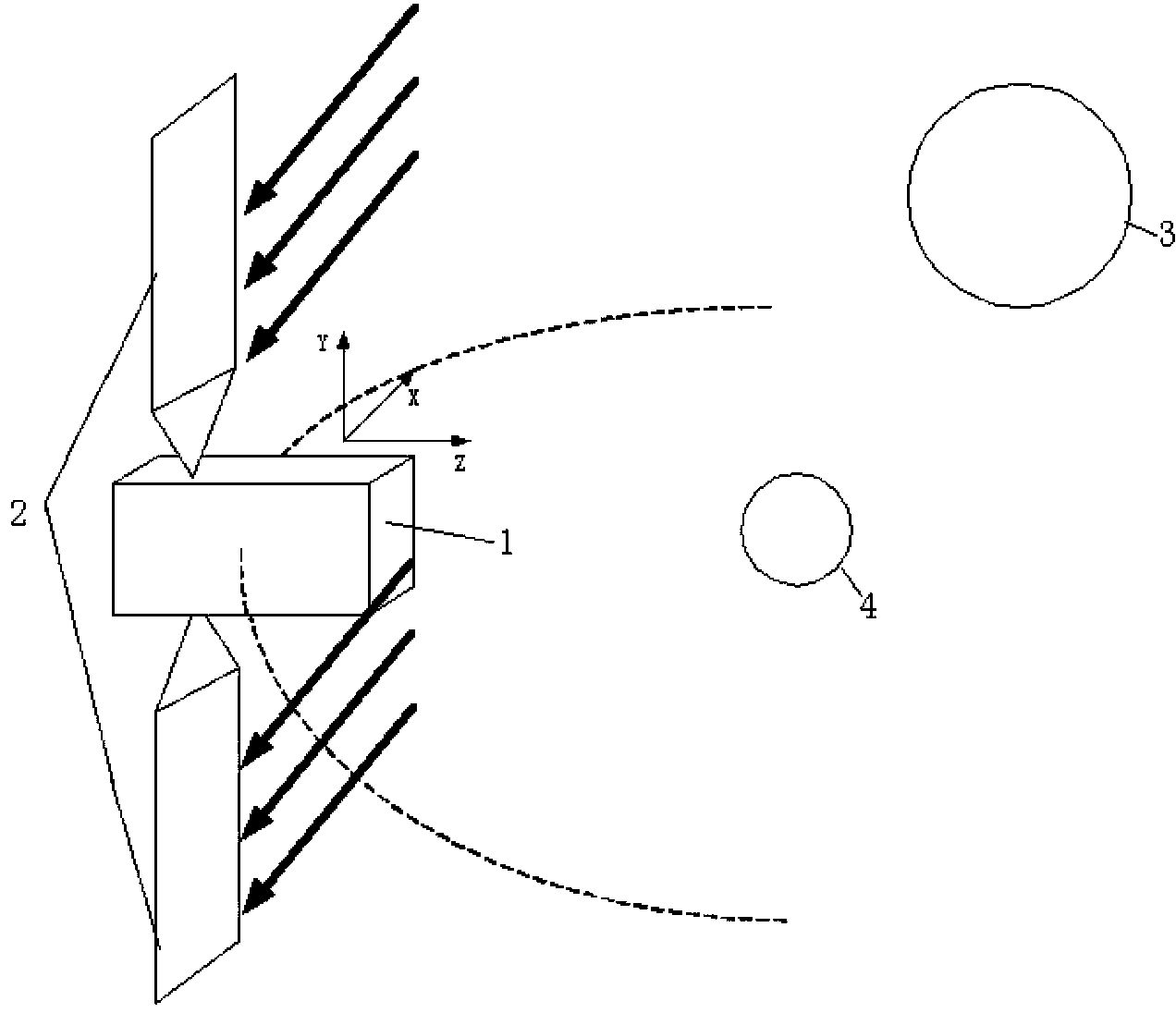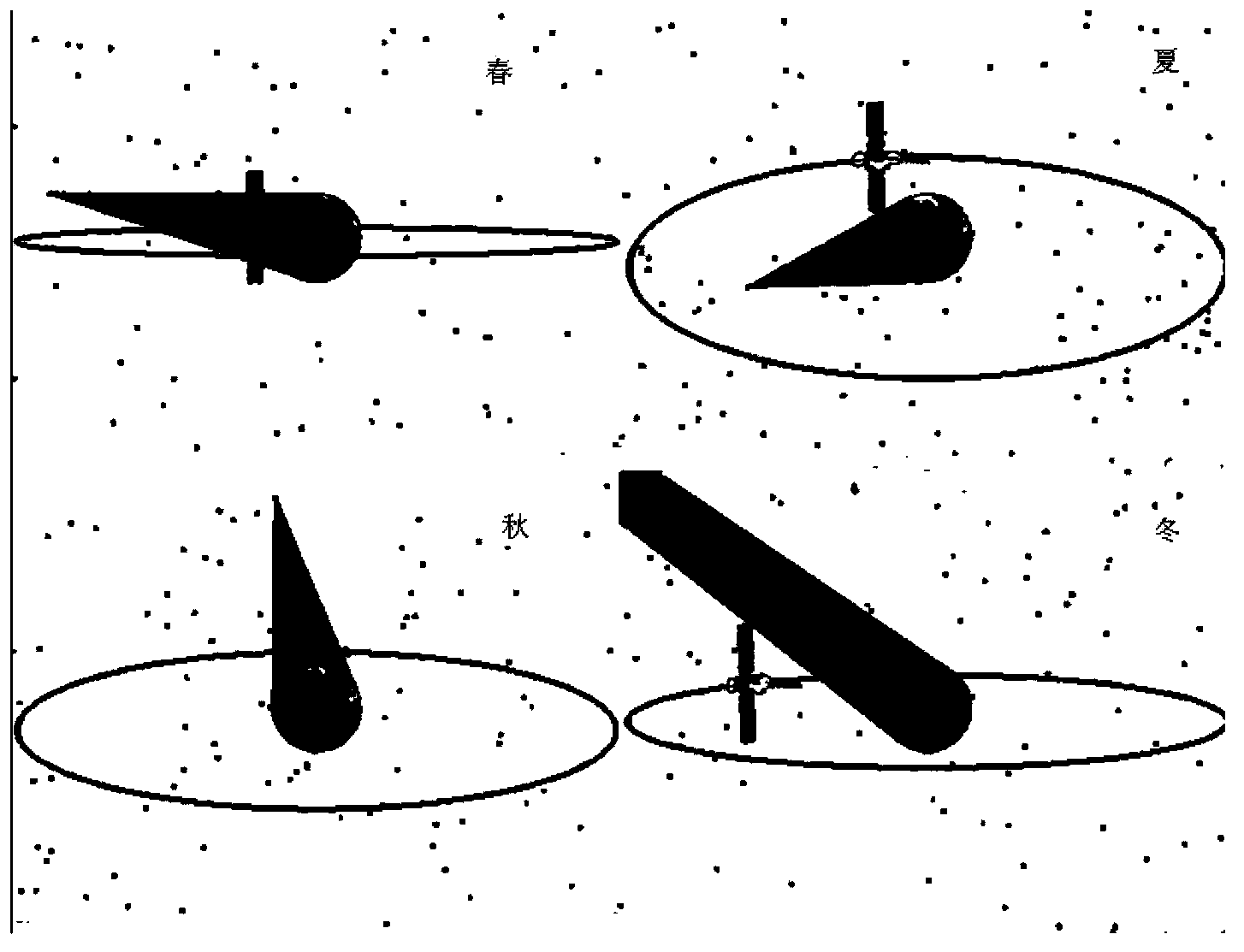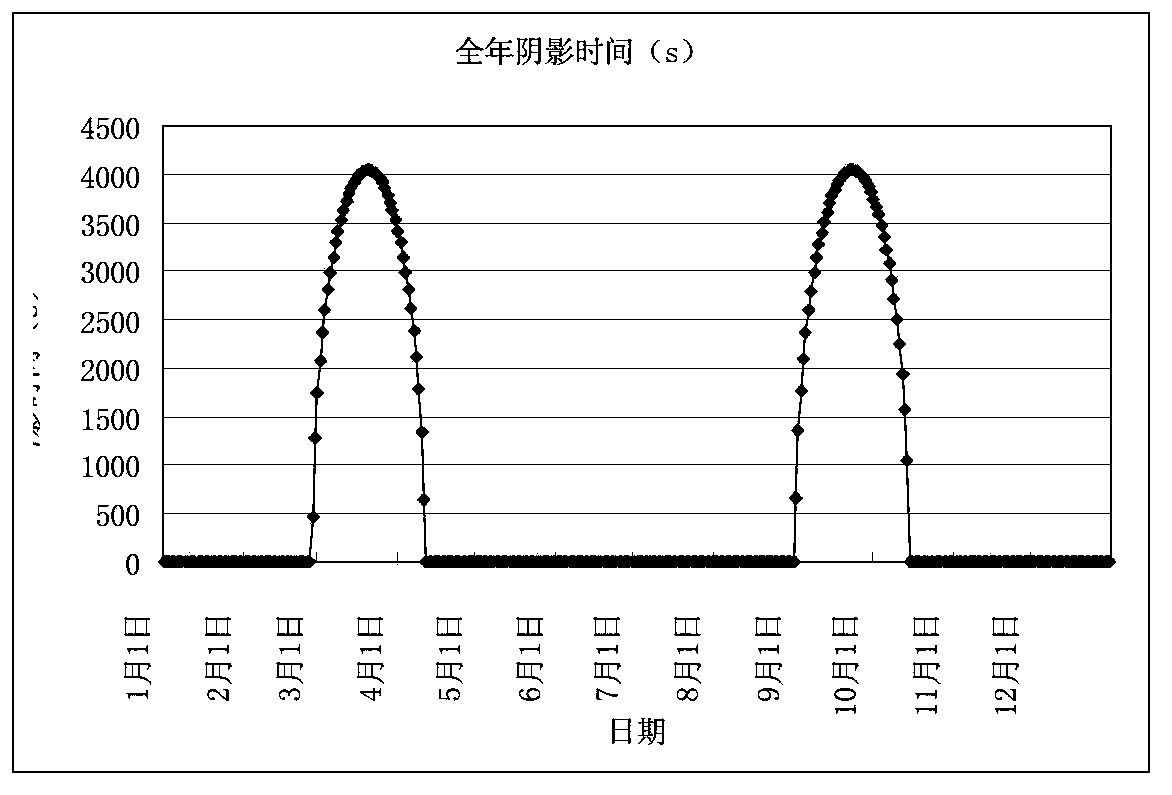Analysis and calculation method for orbital shading of geostationary orbit satellite solar cell array
A technology of solar cell array and geostationary orbit, applied in the power supply system of aerospace vehicles, etc., can solve the problems of satellite power drop and limitation
- Summary
- Abstract
- Description
- Claims
- Application Information
AI Technical Summary
Problems solved by technology
Method used
Image
Examples
Embodiment Construction
[0060] The technical solution of the present invention will be further described in detail below through the drawings and specific embodiments.
[0061] figure 1 It is a schematic diagram of the battery array of a geostationary orbit satellite being blocked by a star. In the figure, the satellite body 1, the solar array 2, the sun 3, and the earth 4. The arrows in the figure indicate the direction of the sun vector.
[0062] The method for analyzing and calculating the solar cell array of a geostationary satellite in orbit provided by the present invention includes the following steps:
[0063] Step 1. Analyze the annual average change of the solar illumination angle of the geostationary satellite;
[0064] Step 2: Analyze the changing law of the satellite solar cell array being blocked by stars in orbit;
[0065] Step 3: Calculate and simulate the area of the battery array that is blocked in orbit according to the aforementioned analysis results.
[0066] The specific implementation m...
PUM
 Login to View More
Login to View More Abstract
Description
Claims
Application Information
 Login to View More
Login to View More - R&D
- Intellectual Property
- Life Sciences
- Materials
- Tech Scout
- Unparalleled Data Quality
- Higher Quality Content
- 60% Fewer Hallucinations
Browse by: Latest US Patents, China's latest patents, Technical Efficacy Thesaurus, Application Domain, Technology Topic, Popular Technical Reports.
© 2025 PatSnap. All rights reserved.Legal|Privacy policy|Modern Slavery Act Transparency Statement|Sitemap|About US| Contact US: help@patsnap.com



